Why is a match between citizen and technology important? A framework for assessment

When assessing a match between citizen and technology you should consider several aspects of the citizen’s (patient’s) situation; the technology; yours and the citizen’s familiarity with technology in general and the specific technology in question; and how the use of technology can affect their treatment as well as your workflow as a healthcare professional?
These considerations can be summed up in 5 central elements that should be considered before using a specific technology with a citizen. The citizen and the technology should be matched as closely as possible on all 5 elements. The 5 elements are:
-
- The knowledge, resources and limitations of the citizen
- What are the physical settings in which the technology must operate?
- The options and limitations of technology
- The professional purpose of the technology
- How technology changes daily workflows and tasks
Each element will be described further in the following sections of this theme.
Source / References
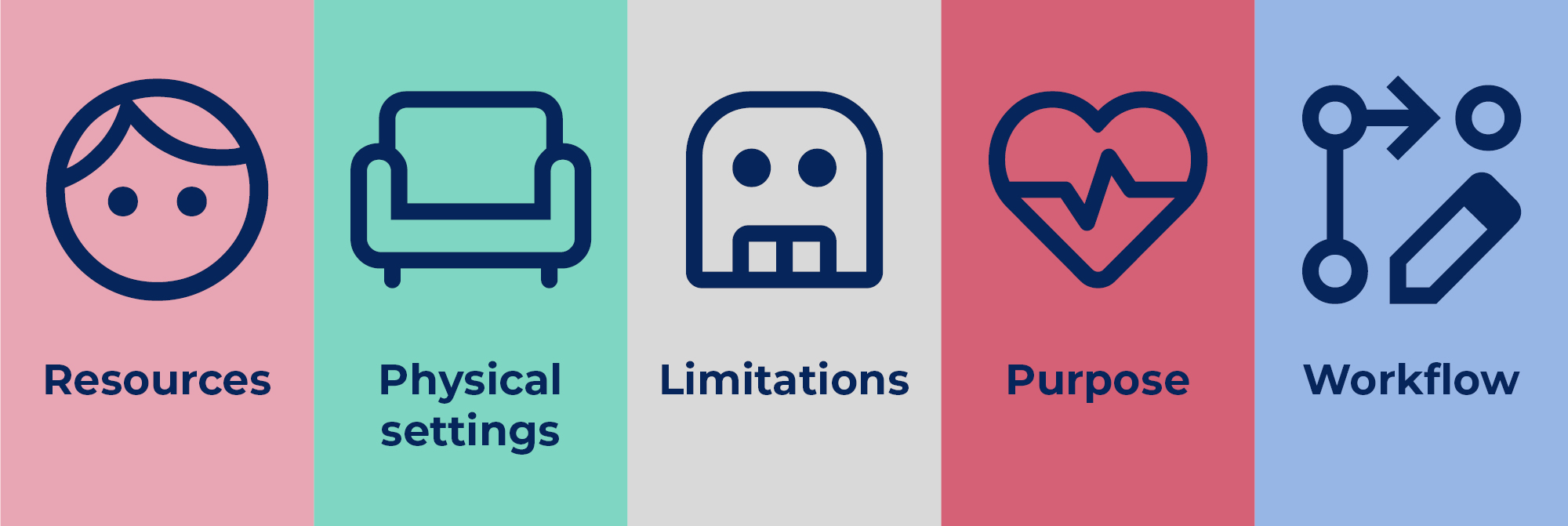
1: The knowledge, resources and limitations of the citizen

Always consider and test the level of digital literacy of the citizen (patient) when you match them with a technology. You may be surprised by their competency levels.
Citizens’ knowledge, resources and limitations
In order to examine resources and limitations, a number of methods are used, depending on the healthcare measures in question. In most cases, you will use a combination of:
- Observations
- Questions – structured according to a schedule or semi-structured
- Professional studies and tests
Investigate: What is the value of the technology?
What will citizens (patients) gain from using the technology? Ask citizens (patients) about the possibilities and limitations of the technology. Get an insight on what is important to them:
- Ask directly: What is important to you?
- Familiarize yourself with citizens’ (patients’) encounter with the healthcare system.
- Consider where the introduction and use of technology could be of benefit to the citizen (patient).
- Discuss whether or not including technology would be helpful.
Source / References
- The DELIVER project
- Digis
- Dansk Selskab for Patientsikkerhed
- https://patientsikkerhed.dk/english/
- Region of Southern Denmark
- HR management academy
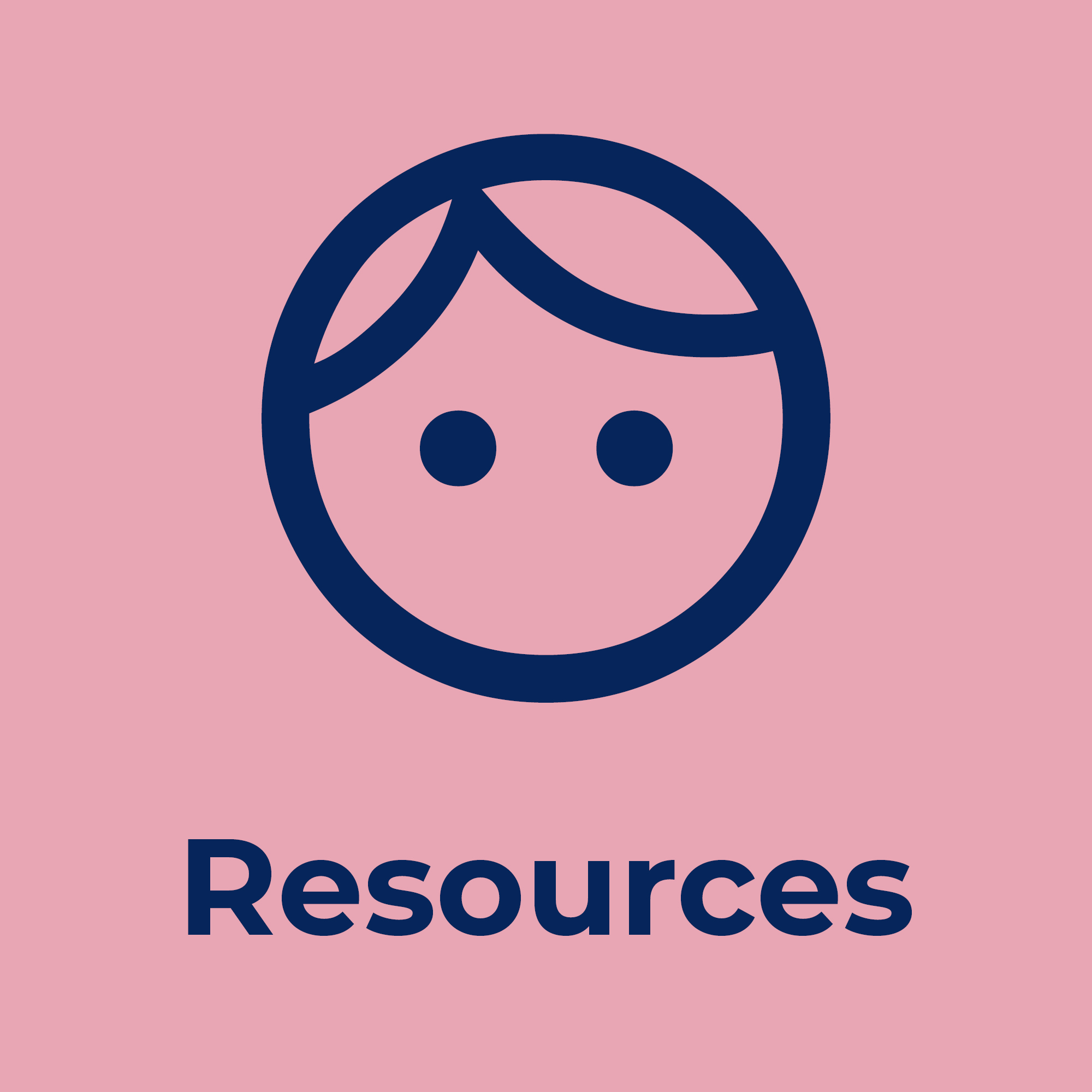
Tools
The following tools may guide you in learning more about what is important to the citizen (patient), their experiences with the healthcare system and what would be helpful to them. Click on each tool to learn more about it.
PDF:
Questions for reflection
- How important is it to assess the level of digital literacy of citizens (patients) before matching them with a technology? Why?
- What methods can be employed to examine the knowledge, resources, and limitations of citizens (patients) in relation to healthcare measures?
- How can citizens’ (patients’) encounters with the healthcare system provide valuable insights into their needs and priorities?
- In what ways can the introduction and use of technology benefit citizens (patients) in the healthcare context? What are possible drawbacks?
- Why is it important to align the use of technology with what citizens (patients) consider important to them?
2: What are the physical settings in which the technology must operate?

Using technology for e.g. home monitoring requires access to the internet as well as digital devices. Some technological devices require specific physical settings in order to operate. It is important to also bear in mind the physical environment of the citizen.Check out the simple and practical conditions first.
Investigate the physical setting of the citizen
Examining the physical environment of a citizen depends on whether you as a healthcare professional have access to the citizen’s (patient’s) home (or other context where the technology is to be used). Knowledge can be obtained by:
- Observing in their home – if possible
- QuestionsInformation from relatives
It is important to beware of the specific physical requirements of the technology that you are considering for your patient and to compare these with the physical setting of the patient’s home. If not a match, consider whether the physical settings can be changed so that the requirements are met or if another device should be considered.
Dilemma film: How do I assess whether home monitoring is the best solution?
This case example touches upon the assessment of whether or not home monitoring is the best solution and challenges that may arise when attempting to implement this.
Go to the dilemma film to learn more about this subject.
Source / References
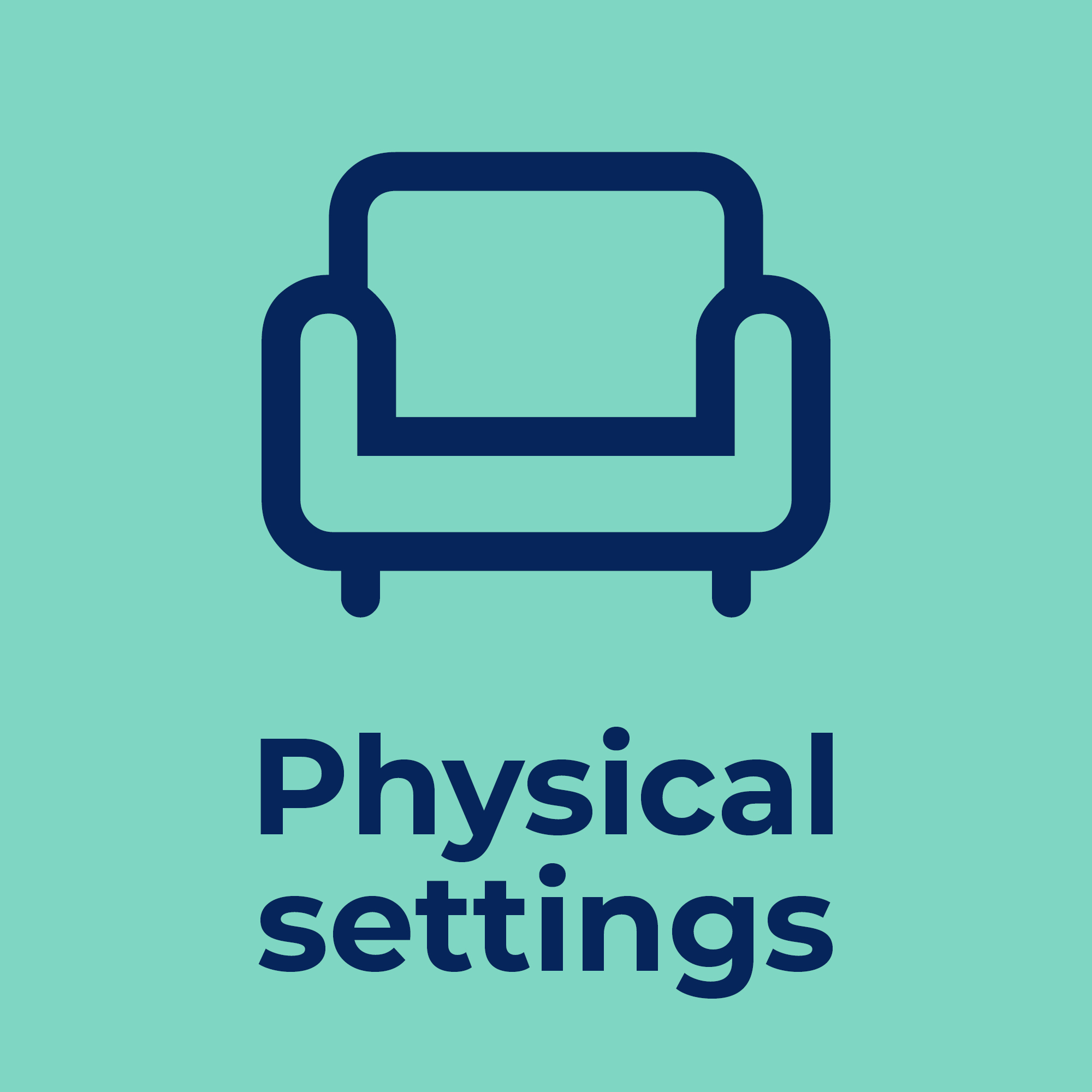
Questions for reflection
- What are the essential physical settings required for technology to operate effectively, particularly in the context of home monitoring?
- In what ways can observing a citizen’s home provide valuable insights into their suitability for home monitoring or other technology?
- Which methods would you use to assess the physical environment of a citizen or patient? Give reasons for your answer.
- How may the physical setting provide a challenge when implementing technology?
- How would you handle these potential challenges?
Tools
The following tools may guide and inspire you in entering into dialogue with the citizen about their physical environment. Click on each tool to learn more about it.
- Life-Oriented Technology Assessment
- Ask the citizen – and their relatives
- What is important to you?
- User journey game
3: The options and limitations of technology

What are options and limitations of the technology to be considered – and how do you assess these?
In order to identify the options and limitations of a given technology for a particular citizen (patient), you must familiarize yourself with the technology’s specifications.
This requires:
- That you have tried the technology, preferably on your own body (if possible)
- That you have practiced using the technology alone or together with colleagues
- That you have looked into what the technology requires of the citizen (physical, cognitive, psychological, motivation, etc.) and their physical environment
- That you have considered your own barriers in introducing the technology
Having familiarized yourself with the technology better equips you in assessing the options and limitations of the technology and comparing these to the needs of the citizen and ensuring the best possible match. When guiding citizens in the use of a specific technology, having an insight of its options and limitations is also important.
TIP: Use a personal approach in presenting the technology and offer guidance and tips that are specific to the citizen’s situation and needs.
Source / References
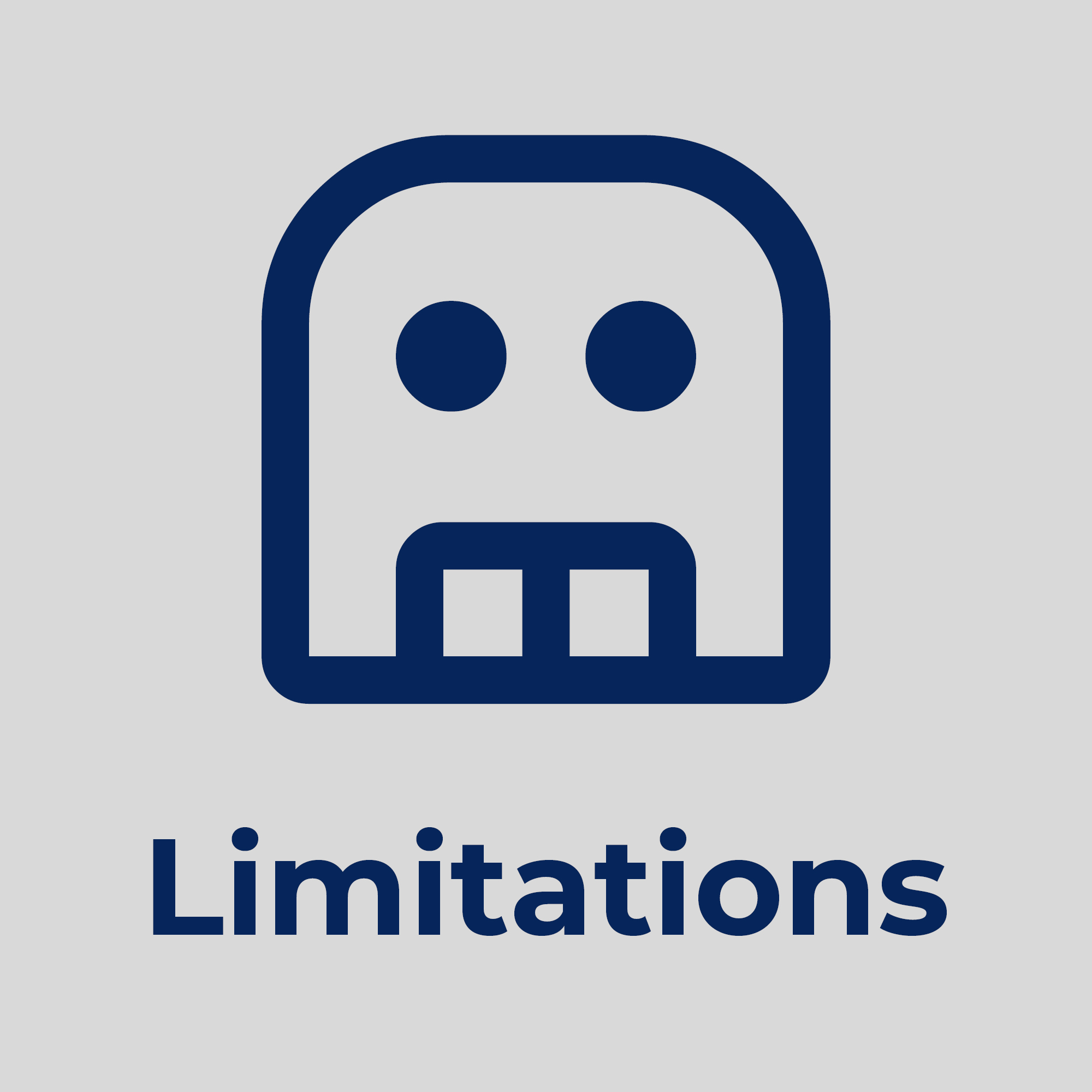
Questions for reflection
- In your work, how (if that is the case for you) are you expected to familiarize yourself with new technology?
E.g. through meetings, structured learning etc. - Are you satisfied with this method?
- What are ways to familiarize yourself with technology used in your work?
- How can you effectively assess the options and limitations of a technology in order to make informed decisions?
- When considering a specific technology, what aspects related to the citizen need to be considered, such as physical, cognitive, psychological, and motivational factors?
- Which aspects related to you and your workplace need to be considered?
Tools
The following tools may inspire you in regards to going into dialogue with the citizen and their relatives and learning more about what is and what isn’t helpful to them. This may aid you in identifying options and limitations of the technology. The tools may also act as a starting point of reflection and discussion in your workplace of how you familiarize yourself with and approach new technology.
- Meeting Guide for Reflection Meeting
- Life-Oriented Technology Assessment
- Ask the citizen – and their relatives
- What is important to you?
- User journey game
4: The professional purpose of the technology

What purpose does the technology fulfill? It is important to explain why the technology should be used and define its purpose, especially to the citizen.
The professional purpose of the technology
It can be important early in the assessment process to involve the citizen in the considerations of using technology. This is important in regards of motivating the citizen through autonomy in their own treatment and in making sure that the purpose of the technology matches with the citizen’s needs and expectations. It is important to align expectations for all parties involved. If there is not a match between the purpose of the technology and the citizen’s needs and expectations, consider whether this can be achieved through dialogue or the possibility of a different solution. In order to define the professional purpose of introducing a technology to citizens, one must consider the following:
- Whether the technology replaces and/or supplements previous services
- What the citizen gains by using the technology?
- What the healthcare professional gets out of using the technology
- Whether there can be other gains from using the technology
Be curious about the citizen’s needs, experiences and expectations and go into dialogue on how the technology will match with this.
Source / References
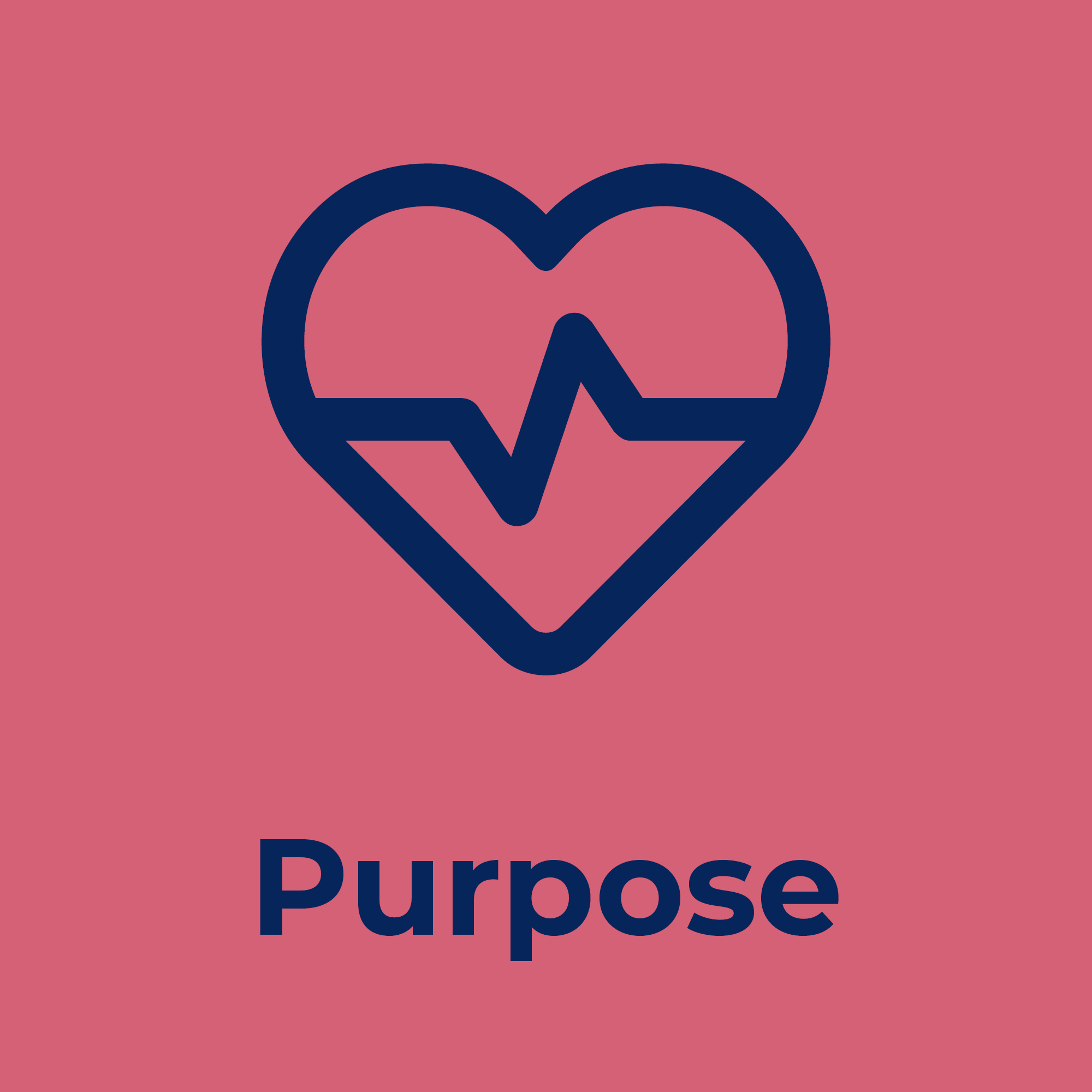
Questions for reflection
- When introducing a technology to citizens, why is it important to involve them early in the assessment process and consider their perspectives?
- Besides the immediate gains for citizens and healthcare professionals, are there any other potential advantages or positive outcomes that can be achieved by implementing the technology?
- How do you explain the technology and its purpose to citizens (patients)?
- How does clarifying the professional purpose of introducing a technology help align the goals and expectations of both citizens and healthcare professionals?
- What are possible challenges in explaining the technology and its purpose to citizens?
Tools
The following tools may aid you in considerations regarding the professional purpose of the technology and involving the citizen in this process. Click on each tool to learn more about it.
- Meeting Guide for Reflection Meeting
- Life-oriented technology assessment
- Ask the citizens – and their relatives
- What is important to you?
- User journey game
Source / References (Level 3)
5: How technology changes daily workflows and tasks

Technology changes the way you work, your mind-set and your work culture. In order to embrace technology, please consider the following.
In order to get the full benefit of a technology, one must make it clear which previous workflows and tasks are being changed and in what way. Here you can e.g. use:
- Descriptions of before and after scenarios, e.g. flowcharts, which provide a visual overview of workflows before and after the introduction of technology
- Descriptions of roles and tasks for the employees who must use the new technology (who is responsible for screening, instruction, maintenance, support, etc.) A healthcare manager or someone in a similar position should lead this kind of exploration of changing workflows and tasks.
Implementation of new technology is a complex process that may be accompanied by both joy and frustration. Go to theme 1 have a look at “Sustainable implementation” to read more about enablers and barriers in the sustainable implementation of new technology.
Dilemma film: The balance between technology and people
This case example touches upon the balance between technology and people and different perspectives on the use of technology of healthcare.
Go to the dilemma film to learn more about this subject.
Meeting guide for Reflection Meeting
This tool is meant to help you, as a team, reflect on the pros and cons of implementing and working with digital technologies on a daily basis.
Source / References

Questions for reflection
- Have you experienced any changes in the way you work due to technology? Use specific examples, if possible.
- Can you think of ways technology may change the way you work in the future?
- Why is it important to clearly identify and communicate the specific workflows and tasks that will be changed by the implementation of technology? Consider the benefits of clarifying this information.
- How does familiarity with the technology contribute to maximizing its benefits? Consider the advantages of trying the technology personally and practicing its use alone or with colleagues.
- In what ways can understanding the requirements of the technology on the citizen (physical, cognitive, psychological, motivation, etc.) enhance the implementation process?
Tools
The following tools may aid you in learning more about and reflecting on how technology changes workflows and daily tasks for you and/or your team.
- Life-Oriented Technology Assessment
- User journey game
Case-examples: Emily and John

Here are two cases to practice and apply your new knowledge regarding match-making between citizens and technology. Read the patient profile and scenario and answer the questions for reflection either alone or in groups to spark discussion and reflection.
Case 1: Glucose Monitoring App
Patient Profile
Emily Anderson (age 68) is a retired school teacher who lives alone in a suburban area. She has been diagnosed with diabetes and requires regular monitoring of her blood sugar levels. Emily has limited experience with technology and prefers traditional methods of managing her health.
Scenario
Emily’s healthcare provider recommends the use of a glucose monitoring app to help her track her blood sugar levels more effectively. The app allows patients to input their blood glucose readings, receive reminders for medication and appointments, and access educational resources about diabetes management.
Note: This case example highlights the importance of understanding patients’ individual characteristics, preferences, and limitations when introducing healthcare technology. The questions for reflection focus on assessing patients’ needs, addressing potential challenges, and ensuring the technology aligns with their priorities for effective implementation.
Case 2: Smart Blood Pressure Monitor
Patient Profile
John Davis (age 45) is a construction worker who leads an active lifestyle. He has recently been diagnosed with hypertension (high blood pressure) and needs to monitor his blood pressure regularly. John is tech-savvy and uses various mobile applications for tracking his fitness and health.
Scenario
John’s healthcare provider recommends the use of a smart blood pressure monitor to enable him to monitor his blood pressure at home conveniently. The smart blood pressure monitor connects to his smartphone via a mobile app and provides real-time readings, tracks trends, and generates comprehensive reports.
Note: This case example emphasizes the importance of considering patients’ technological proficiency, lifestyle, and preferences when matching healthcare technology. The questions for reflection focus on tailoring the technology to the patient’s needs, ensuring seamless integration into their routine, and addressing any potential barriers for successful adoption and utilization.
Questions for Reflection Emily:
- How would you assess Emily’s level of digital literacy before introducing the glucose monitoring app? What factors might indicate her competency level?
- What methods could be used to determine Emily’s knowledge, resources, and limitations regarding diabetes management?
- Based on her preferences and familiarity with technology, do you anticipate any challenges in introducing the glucose monitoring app to Emily? How could these challenges be addressed?
- What potential benefits could Emily gain from using the glucose monitoring app? How might it improve her diabetes management?
- How could you directly ask Emily about her priorities and concerns regarding the use of technology for diabetes management?
- What insights could be gained by understanding Emily’s previous encounters with the healthcare system and her experiences with managing diabetes?
- In what specific ways could the glucose monitoring app assist Emily in managing her diabetes effectively? How could it address her individual needs?
- Discuss with Emily whether including the glucose monitoring app would be helpful for her. How would you approach this conversation and consider her perspective?
- How might Emily’s reluctance or resistance to using the app be addressed? What strategies could be employed to increase her comfort and confidence with technology?
- How would you evaluate the value and effectiveness of the glucose monitoring app in Emily’s case? What indicators or outcomes would you consider?
Questions for Reflection John:
- How can John’s proficiency in using technology positively impact his adoption and utilization of the smart blood pressure monitor?
- In what ways can John’s construction worker background and active lifestyle influence the choice and features of the smart blood pressure monitor?
- How might John’s familiarity with mobile applications and technology influence his level of engagement and adherence to monitoring his blood pressure regularly?
- What specific benefits could John gain from using the smart blood pressure monitor? How might it improve his hypertension management compared to traditional monitoring methods?
- How can you directly inquire about John’s expectations and preferences for using technology in managing his hypertension?
- In what ways can understanding John’s daily routine, work demands, and physical activitiesinform the integration and usability of the smart blood pressure monitor?
- Discuss with John the potential advantages of using the smart blood pressure monitor in his case. How would you highlight its relevance and potential impact on his health outcomes?
- What strategies can be employed to support John in incorporating the smart blood pressure monitor seamlessly into his lifestyle and routine?
- How might you address any concerns or barriers John may have in using the smart blood pressure monitor? What resources or training could be provided to enhance his confidence and comfort?
- How would you evaluate the effectiveness of the smart blood pressure monitor in John’s case? What indicators or outcomes would you consider to assess its impact on his hypertension management?



